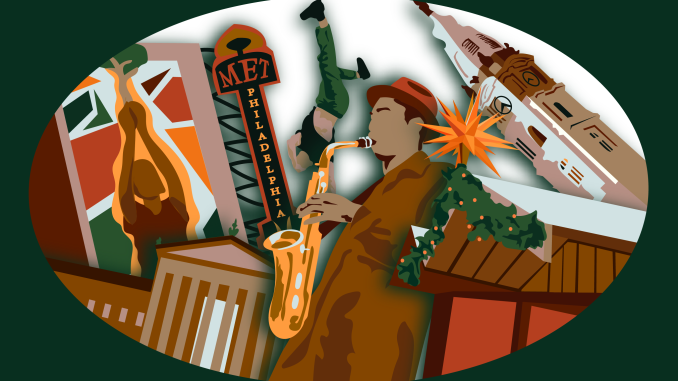
This December, Esperanza Arts Center, a community education and development center located at 5th Street near Bristol, is hosting a variety of dance and concert performances, including “Christmas in the Barrio,” an annual Christmas celebration. Attendees can enjoy traditional Latin music and dance, festive food, face-painting and more family-friendly activities for free by attending in person on Dec. 16 or livestreaming the event.
Students should take advantage of opportunities, like “Christmas in the Barrio,” to explore the arts, culture and history that the city of Philadelphia has to offer. Interacting with community arts can help students connect with the city they will be calling home for the next few years and strengthen local bonds.
“Sometimes we go around and we spend four years in college and we are forever tourists of that area that we live in,” said Pepón Osorio, an art education and community arts practices professor. “The arts can provide an opportunity to begin to add another lens to the way that you view the city and also prepare you for the relationship that you have either to your immediate neighborhood or to your community.”
Philadelphia art represents the city’s rich history and diverse cultures. Students can connect with community members through place-based arts, which strengthens community well-being, according to a 2021 study by Metris Arts Consulting, a research and consulting firm for government and arts agencies.
Temple University and the residents of the surrounding areas already call on students to be good neighbors by engaging with the North Philadelphian community, so learning about the city’s arts and culture can help foster that connection.
Lainey Macken, a junior film and media arts major, believes students should avoid treating Philadelphia like it is solely a campus and learn about the city’s culture and history instead.
“I think people who go to Temple sometimes don’t go off campus that much,” she said. “Interacting with the city and its history and culture is super important to understand the place that we live in.”
The city offers a variety of arts and culture events and exhibits, and many of them are either low-cost or free. Some, like visiting City Hall to see the holiday light show, may even already be part of a student’s routine.
Learning about the architectural history behind City Hall can serve as an early step in understanding Philadelphia’s roots. Each side of the building has carvings and illustrations that demonstrate different important aspects of early Philadelphia. The north side has an allegorical theme of government and history, the south side represents justice, while the east side shows more history and the west side depicts rehabilitation and lawbreakers, Billy Penn reported.
Students can also engage with arts and culture in their daily lives when they see their favorite musicians at various concert venues, like the Met at Broad Street and Poplar, which was once the historic Metropolitan Opera House, an iconic music space in North Philadelphia.
Strolling through the Old City neighborhood could lead students to the Arden Theatre Company at North 2nd and Filbert Streets or a variety of intimate art galleries. Arden Theatre Company brings performances to schools and around the city to connect people through storytelling.
Students can also access a variety of inexpensive or free museums. The Wagner Free Institute of Science, located on 17th Street near Montgomery Avenue, features free natural history exhibits. The Philadelphia Museum of Art has a “pay what you wish” offer on the first Sunday of every month and each Friday from 5 p.m. to 8:45 p.m., as well as a student discount any other day.
The Mural Arts program is a free self-guided public art tour that showcases more than 4,000 examples of public art in the city, including some in North Philadelphia, like “Cecil B. Moore Philadelphia Freedom Fighters” at 22nd Street and Cecil B. Moore Avenue.
Taking advantage of tours and learning about the murals’ history and their artists can help students connect to the city because many of the pieces have historical and cultural meanings. For example, the mural honoring the Cecil B. Moore Freedom Fighters can teach students about the iconic civil rights group that desegregated Girard College in 1965.
One of Daria Hodies’ favorite ways to experience Philadelphia arts and culture is at PhilaMOCA, located at 12th Street and Spring Garden. PhilaMOCA previously was a showroom for mausoleums, but now it hosts underground, alternative film and performance events.
“I got to see the art that was hung up in the exhibit, and I just thought that it was a really cool experience, and I felt like I learned a lot,” said Hodies, a senior communication studies major.
Philadelphians showcase their lives and stories through the art they create in their neighborhoods. Making time to understand the city’s population can make students more empathetic and respectful of the city’s various identities and cultures.
It is Temple students’ responsibility to be contributing and respectful members of the community, and engaging with the arts and culture of Philadelphia is the perfect way to start.



Be the first to comment